
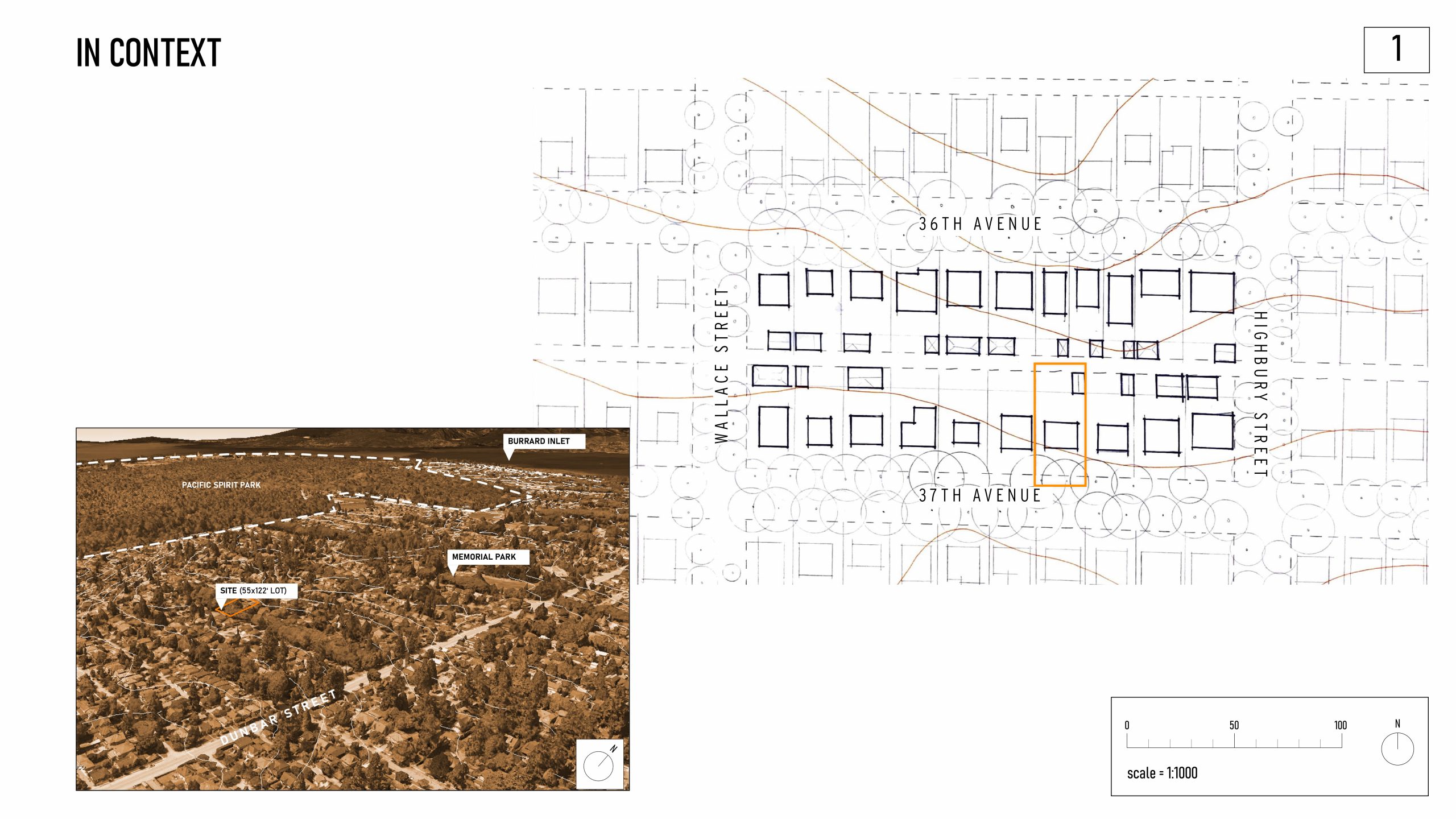
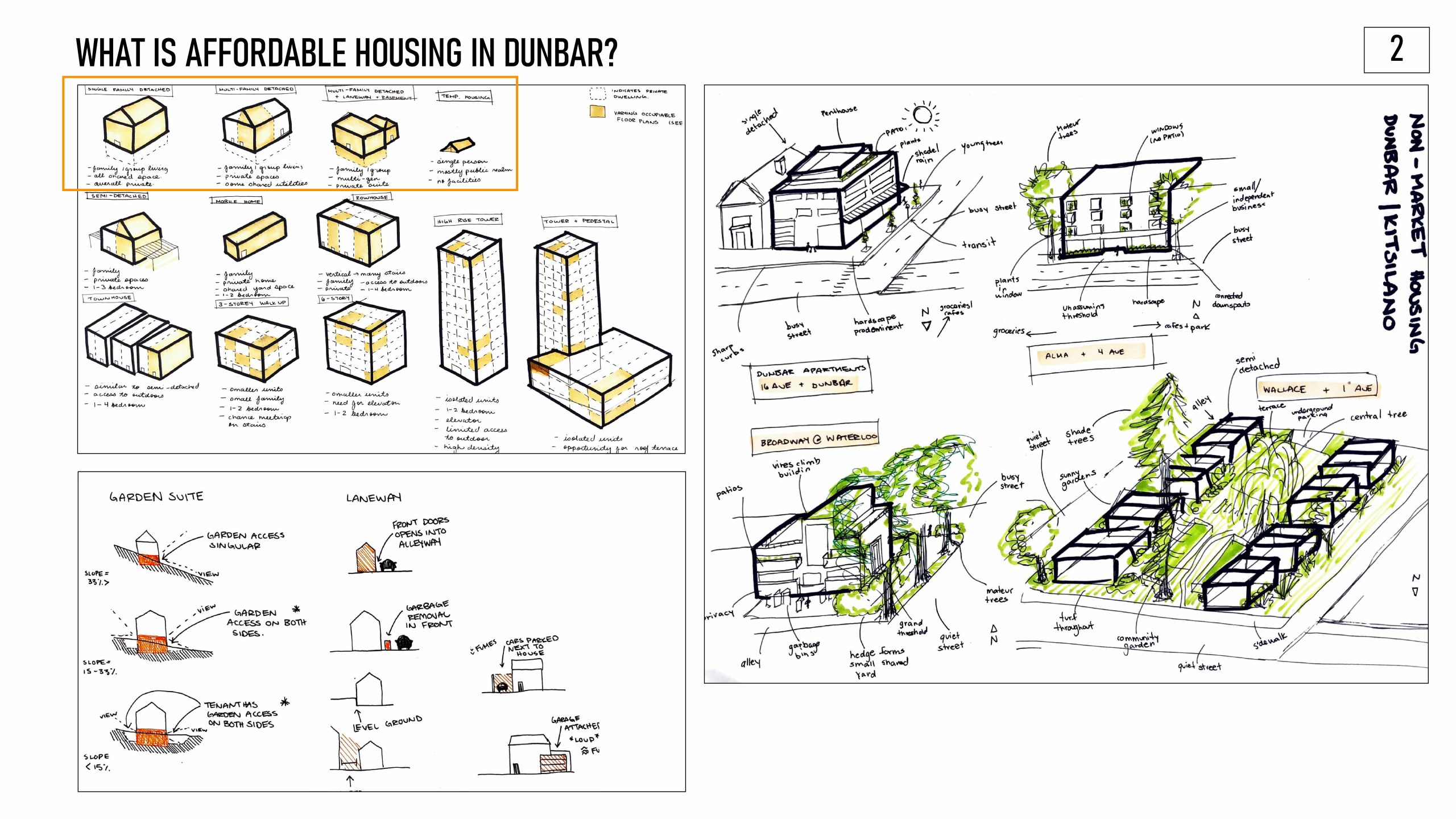
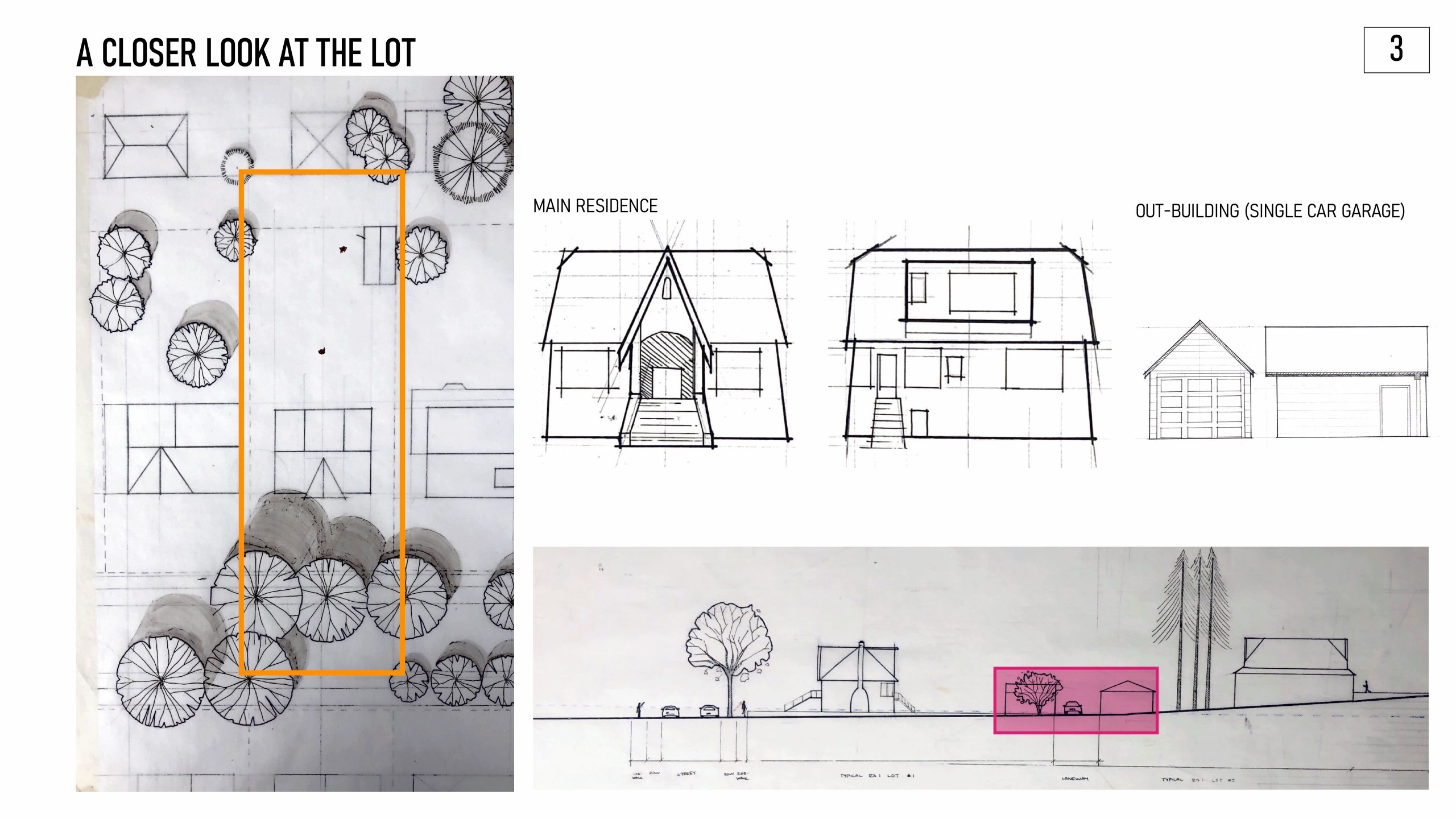
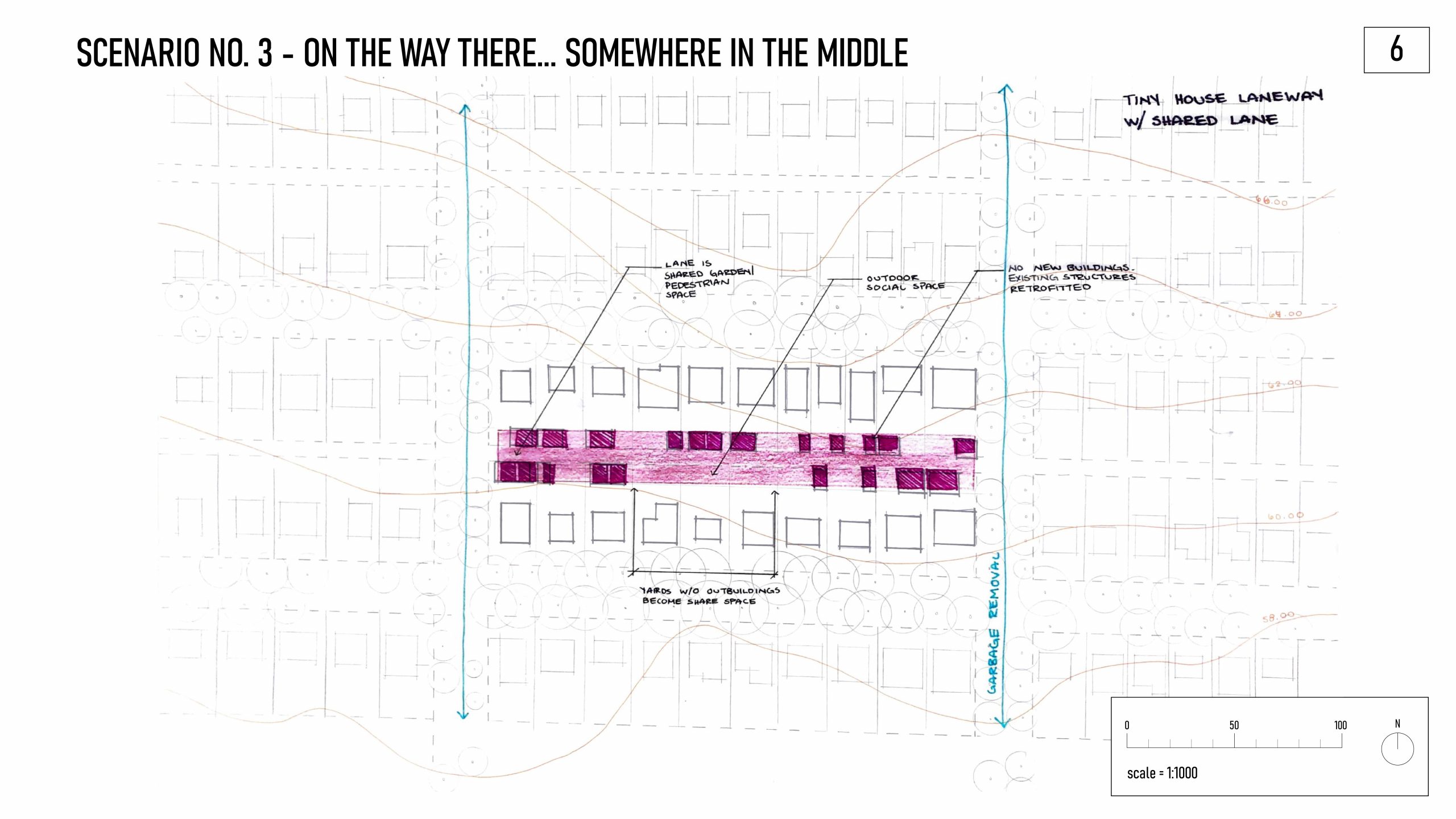


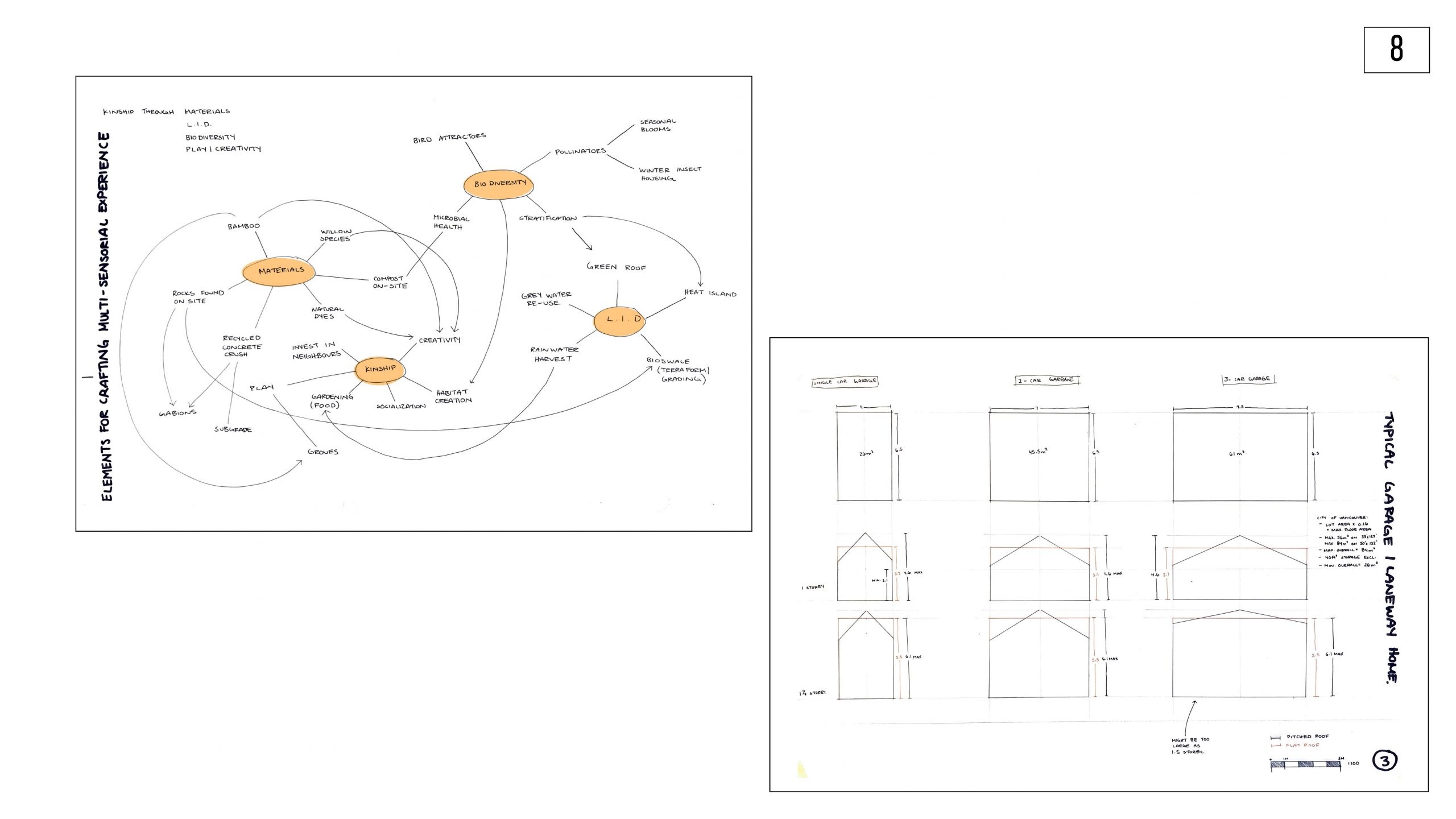
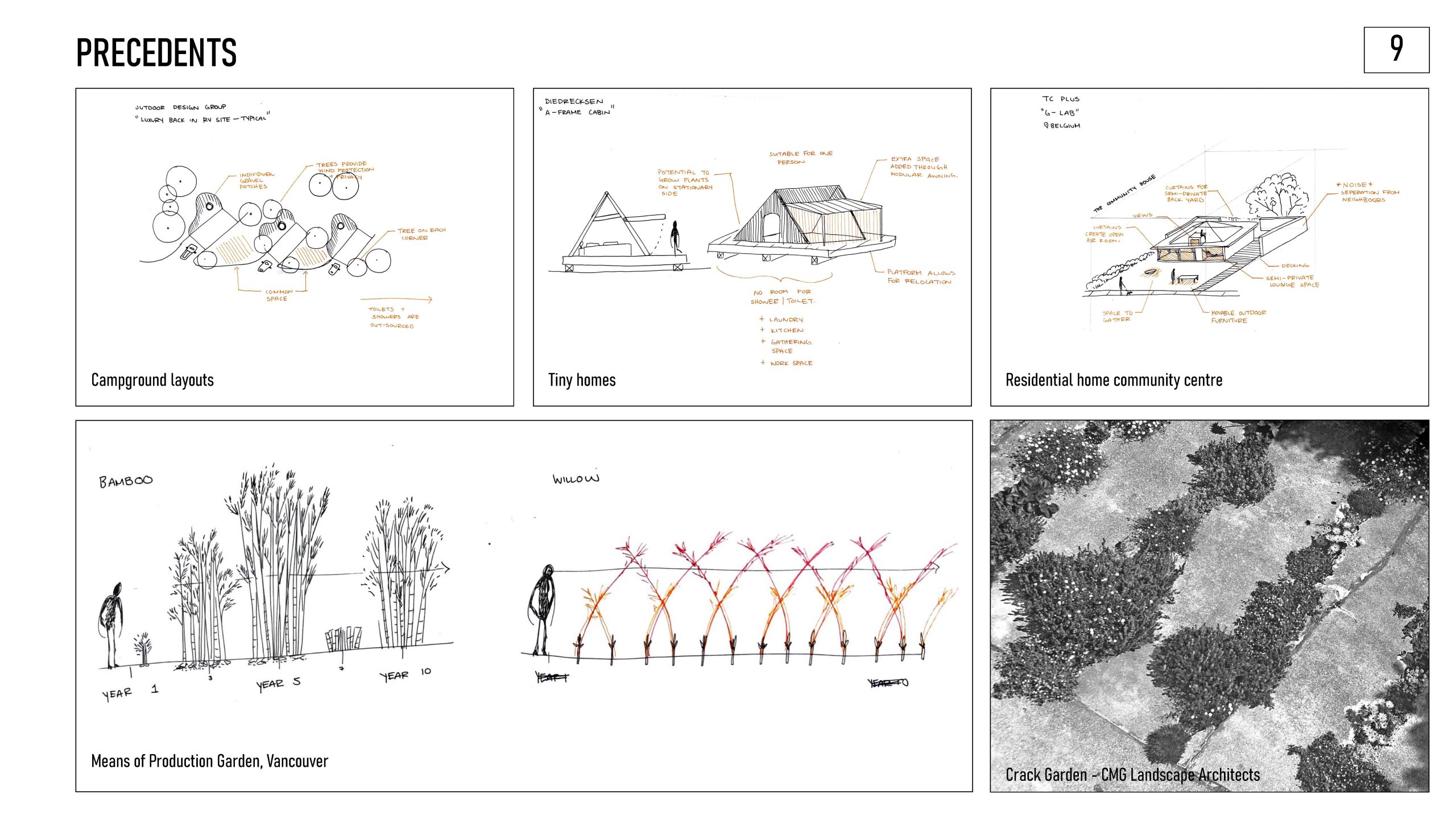
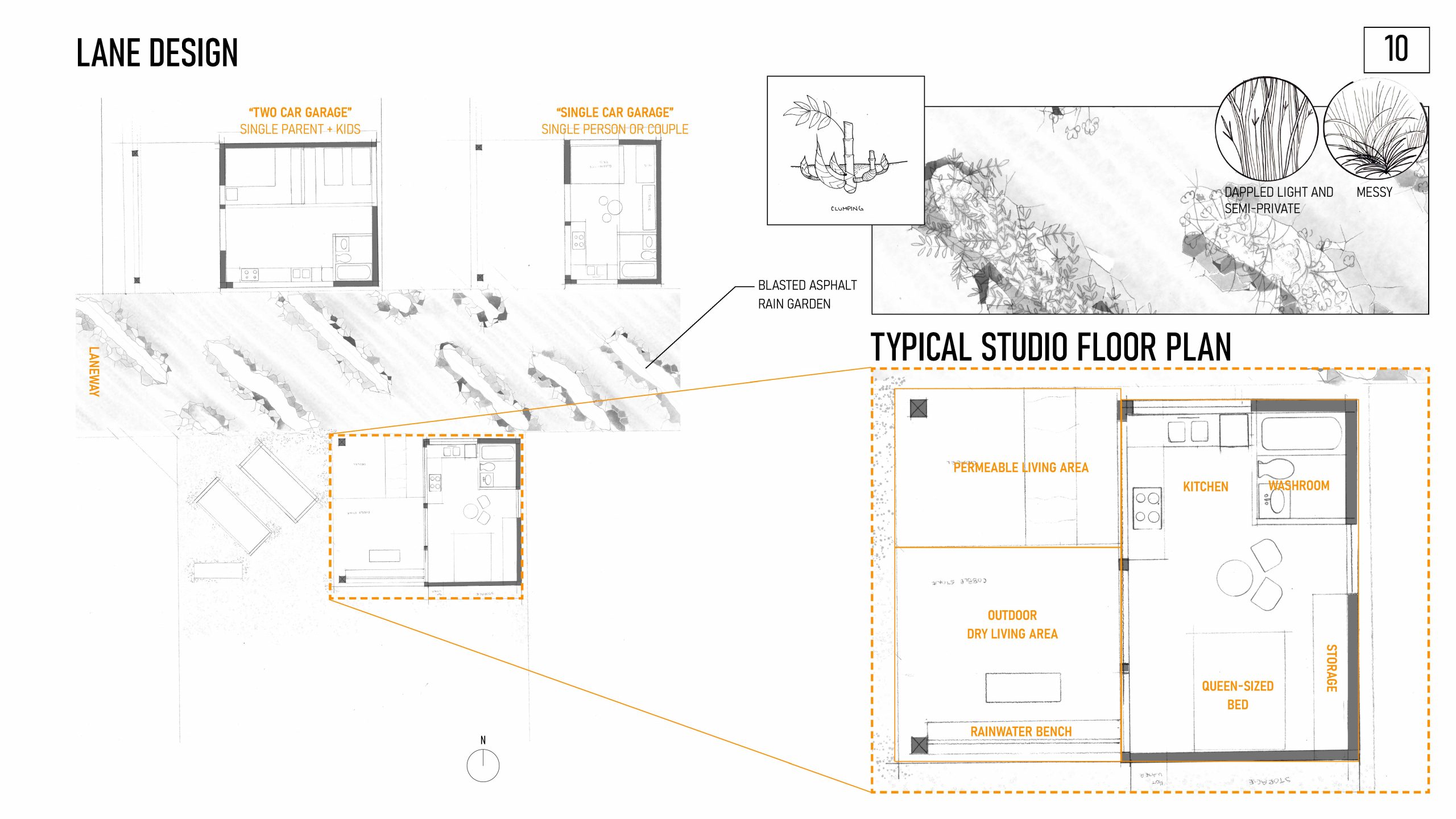
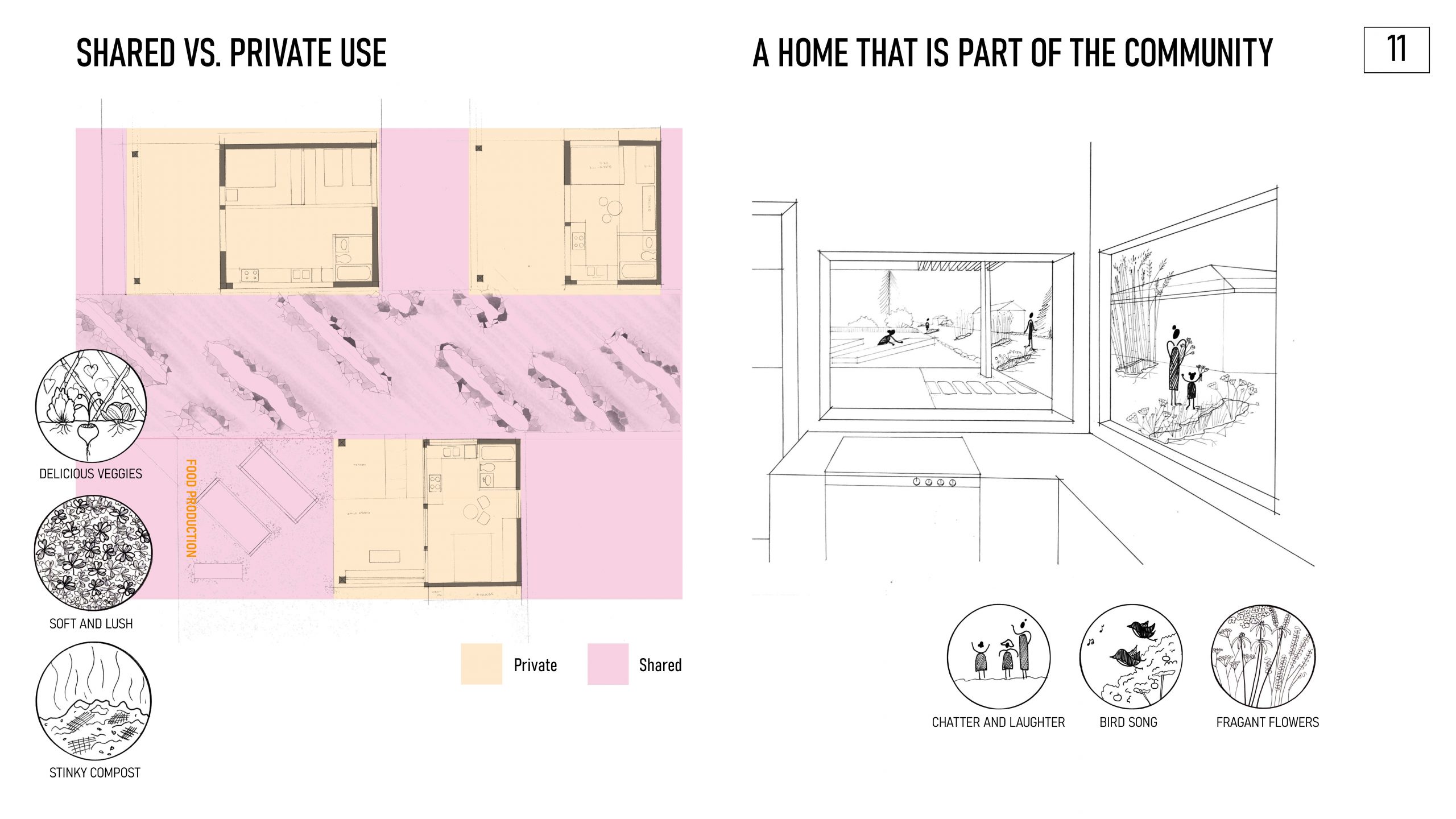


Category Archives: Kendra Scanlon
Kendra Scanlon – Assignment 02
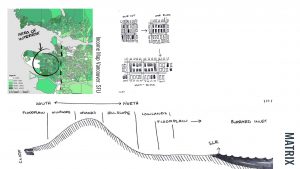


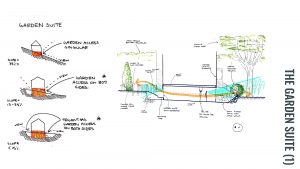



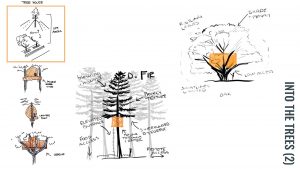
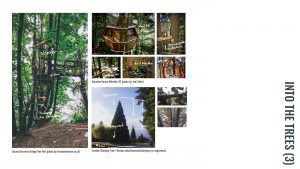
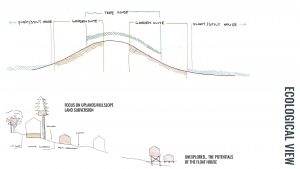
Kendra Scanlon – Assignment 01

Affordable housing is a subjective term. Instead, I have considered “non-market housing” in recognition that the word affordable is applicable in many different soci-economic contexts. My focus here is not on people experiencing homelessness, but instead on the low-to-middle income households seeking housing in Vancouver.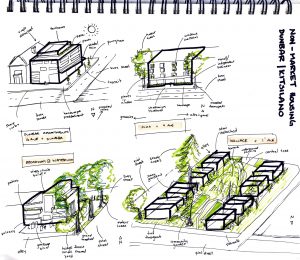
When asked to develop a matrix that aims to prioritize and understanding the sensorial experience of I began by visiting non-market housing in the Dunbar and Kitsilano neighbourhoods. Here, I saw typical ideas of what non-market housing may look and feel like – exemplified through 3/4 drawings above that feature apartment living, often on busy streets. However, the bottom right sketch shows a co-op housing block on a quiet street, and contains many of the amenities that I would seek out if when looking for an affordable place to live. See annotations above.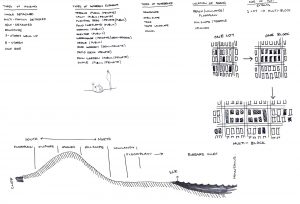
Imagining the dispersion of non-market housing in the city, I began to explore how this would look on a single lot, a full block, and at the multi-block scale. This led to a consideration of topography in relation to non-market housing, defining uplands, hillslope, lowlands, and flood plain as a core consideration in what garden elements would best apply to the lot size. While garden elements describe the localized experience, neighbourhood elements describe lifestyle requirements including access to different amenities. 
A prioritization scheme is suggested, but not filled out. More consideration for how to prioritize each element is required and I suggest that in the real world this would involve community input. However, it is worth noting that through a process of self-reflexivity (understanding what my bare minimum, and my preferred living conditions would be) has proved useful in empathizing with anyone seeking reasonable housing that fits my demographic as a 31 year old woman without children, a whack load of student loans, in a 2 person single income household.